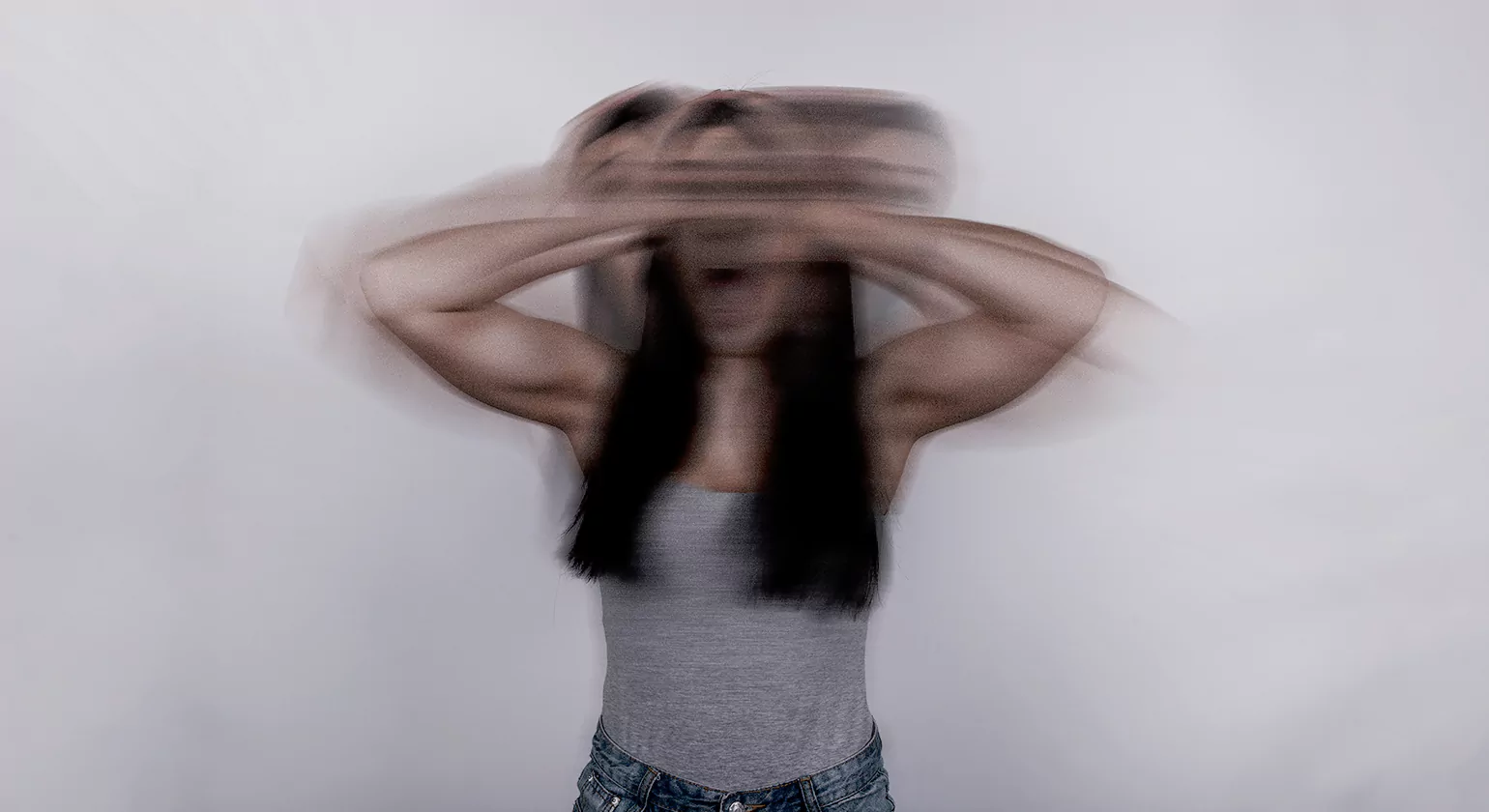Table of Contents
Introduction
Depression is more than just feeling sad. It can make daily life feel overwhelming and hopeless. While some people get better with talk therapy or medication, others may need more help. That’s where inpatient depression treatment comes in. In this detailed guide, we’ll walk you through what inpatient care really is, who it’s for, what happens during and after treatment, and how it can help you or a loved one recover.
When Is Inpatient Depression Treatment Needed?

Depression can vary greatly in severity and impact on daily life. For some individuals, especially when symptoms become severe or unmanageable, inpatient depression treatment may be the most effective way to get the help they need. This type of care provides around-the-clock support in a structured and safe environment, allowing patients to focus fully on healing.
Inpatient treatment for depression is often recommended when there are safety concerns, such as suicidal thoughts or behaviors, or when outpatient therapy and medication are not enough to stabilize symptoms. It’s also vital when depression co-occurs with other conditions like anxiety, substance abuse, or PTSD, requiring a comprehensive and integrated approach.
Overcoming Stigma and Taking the First Step Toward Healing
Seeking inpatient depression treatment can feel overwhelming or intimidating, especially given the stigma that still surrounds mental health in many communities across the United States. However, recognizing the need for more intensive care is a brave and crucial first step toward recovery.
It’s important to remember that inpatient therapy for depression is not a sign of failure but a proactive choice to prioritize mental health. Many people who enter depression inpatient treatment find renewed hope, support, and tools that lead to lasting wellness. Whether you’re seeking help for yourself or a loved one, understanding what inpatient care involves can empower you to make informed decisions.
Understanding Inpatient Depression Treatment

What Is Inpatient Depression Treatment?
At its core, inpatient depression treatment means receiving mental health care in a residential setting where patients stay 24/7. Unlike outpatient therapy, where individuals visit a clinic or therapist’s office periodically, inpatient care provides a highly structured environment with continuous professional supervision.
This approach ensures that patients have immediate access to medical staff, therapists, and psychiatric care whenever needed. The environment is designed to be safe and supportive, minimizing external stressors and distractions so that the focus can be on healing.
Inpatient treatment for depression typically includes a combination of psychotherapy, medication management, and complementary therapies. The goal is to stabilize symptoms, develop coping skills, and create a foundation for long-term recovery.
Who Benefits Most from Inpatient Care?
While inpatient depression treatment is beneficial for many, it’s especially crucial for individuals experiencing:
- Severe depressive symptoms such as profound sadness, hopelessness, or inability to care for themselves.
- Suicidal ideation or behaviors, where safety monitoring is essential.
- Psychotic features accompanying depression, including hallucinations or delusions.
- Co-occurring mental health disorders like anxiety, PTSD, or substance use disorders that complicate treatment.
- Failed outpatient treatment, meaning therapy or medication alone hasn’t brought relief.
- Need for medication adjustments under close supervision due to side effects or complexity.
Families of teenagers facing depression often find inpatient programs invaluable because adolescents may require more intensive support to navigate developmental challenges alongside their mental health struggles.
Differences Between Inpatient, Residential, and Outpatient Treatment Options
It’s important to understand how inpatient care fits within the broader spectrum of depression treatment:
- Inpatient treatment involves 24-hour care in a hospital or psychiatric facility. Patients stay overnight and often for several weeks.
- Residential treatment is also live-in care but usually in a less intensive setting than hospitals, focusing on longer-term recovery, sometimes spanning months.
- Outpatient treatment involves scheduled therapy sessions without overnight stays. This can include individual counseling, group therapy, or medication management.
Choosing between these options depends on the severity of symptoms, personal circumstances, and treatment goals. For many, inpatient therapy for depression is the safest and most effective starting point, especially in crisis situations.
When Inpatient Depression Treatment Is Best Option for You
Inpatient depression treatment involves staying at a specialized facility where you receive round-the-clock care, medical supervision, and intensive therapy. This option is designed for individuals facing severe depression that cannot be effectively managed with outpatient care alone.
Signs You May Need Inpatient Treatment
Severe Symptoms Impacting Daily Life
When depression symptoms are so intense that they interfere with your ability to eat, sleep, work, or care for yourself, inpatient treatment can provide a safe, structured environment to stabilize your condition.
Risk of Harm to Self or Others
If you experience suicidal thoughts, self-harm tendencies, or violent behaviors, inpatient care ensures constant monitoring and immediate intervention to protect your safety.
Lack of Support System at Home
For those without a reliable support network or who face an unstable living situation, inpatient programs offer a controlled, supportive setting that promotes healing.
Failure of Outpatient Treatments
When medications and outpatient therapy do not improve your condition, inpatient treatment provides more intensive approaches including medication management, group therapy, and holistic care.
The Admissions Process: What to Expect

How to Know If Inpatient Care Is Right for Your Loved One
Deciding whether someone needs inpatient depression treatment can be difficult. Signs that inpatient care may be necessary include:
- Frequent or intense thoughts of self-harm or suicide.
- Withdrawal from all social contact and inability to perform daily tasks.
- Episodes of severe anxiety or panic attacks alongside depression.
- Uncontrolled substance use worsening mental health.
- Lack of progress despite outpatient treatment efforts.
If you observe these warning signs, contacting a mental health professional for an assessment is essential. Emergency rooms, psychiatrists, or specialized inpatient programs can provide evaluations to determine the best course of care.
The Intake and Assessment Process: Evaluations, Medical History, and Personalized Plans
Once inpatient treatment is deemed appropriate, the admissions process begins with an intake assessment. This includes:
- Comprehensive evaluation of mental health history, current symptoms, and physical health.
- Risk assessment to evaluate safety concerns like suicidal thoughts or behaviors.
- Medication review and psychiatric evaluation.
- Development of a personalized treatment plan, tailored to individual needs, strengths, and challenges.
The intake team may include psychiatrists, psychologists, nurses, and social workers who collaborate to design a care plan that addresses both immediate symptoms and long-term recovery goals.
Navigating Insurance, Costs, and Medicaid Coverage for Inpatient Mental Health Care
Understanding the financial side of inpatient depression treatment is a major concern for many families. In the United States, coverage varies based on insurance plans, state Medicaid programs, and the type of facility.
- Many private health insurance plans cover inpatient psychiatric treatment, but pre-authorization or referrals may be required.
- Medicaid and Medicare also provide coverage, with different rules depending on the state.
- Out-of-pocket costs, copays, or deductibles may apply.
- Some facilities offer sliding-scale fees or financial counseling.
It’s advisable to contact your insurance provider early in the process to clarify coverage and obtain necessary approvals. Many inpatient centers have dedicated staff to help families navigate insurance and billing questions.
What Happens During Inpatient Depression Treatment?

Daily Life in an Inpatient Facility - Structure, Safety, and Support
One of the key benefits of inpatient depression treatment is the highly structured daily routine designed to promote healing and stability. Patients live onsite and follow a carefully planned schedule that balances therapy, medical care, rest, and recreational activities.
Structure helps patients regain a sense of normalcy and control, often lost during severe depressive episodes. The facility provides a safe, supportive environment free from many of the triggers and stressors outside life may present. Staff are available 24/7 to monitor safety, provide emotional support, and intervene if crises arise.
Many patients find that this immersive care fosters community and belonging through shared group activities and peer support — critical ingredients for recovery.
Types of Therapy Offered
Inpatient therapy for depression includes a variety of evidence-based approaches tailored to individual needs:
- Individual Therapy:
Patients meet one-on-one with licensed therapists or psychiatrists to explore thoughts, emotions, and behaviors. Cognitive Behavioral Therapy (CBT) and Dialectical Behavior Therapy (DBT) are commonly used to develop coping skills and change negative patterns. - Group Therapy:
Facilitated sessions with peers encourage sharing experiences, practicing social skills, and gaining different perspectives. This collective approach reduces feelings of isolation and builds support networks. - Family Therapy and Involvement:
Depression often affects family dynamics. Inpatient programs frequently involve family sessions to improve communication, education about depression, and planning for post-discharge support. - Creative and Holistic Therapies:
Many inpatient centers now incorporate art therapy, yoga, meditation, and even equine therapy. These complementary methods help patients express emotions non-verbally, reduce stress, and build mindfulness.
Medication Management and Psychiatric Care
Medication plays a vital role in depression inpatient treatment. Psychiatrists carefully evaluate and monitor antidepressants, mood stabilizers, or other psychotropic medications to maximize benefits and minimize side effects.
Inpatient settings allow for rapid medication adjustments based on patient response, which is more difficult to do in outpatient care. The combination of medication and therapy increases the chances of symptom improvement and lasting remission.
Addressing Co-Occurring Conditions
Depression rarely occurs in isolation. Many patients admitted for depression inpatient treatment also face co-occurring disorders such as anxiety, PTSD, or substance use disorders. Integrated care models ensure that all these conditions are treated simultaneously.
Addiction specialists, trauma therapists, and psychiatrists work collaboratively within inpatient programs to address the whole person, recognizing that untreated co-morbidities can undermine depression recovery.
Specialized Inpatient Programs

Gender-Specific Treatment Centers - Women-Only and Men-Only Options
Some inpatient facilities offer gender-specific programs, recognizing that men and women often experience and express depression differently. Inpatient treatment for depression in gender-specific centers can create a more comfortable and supportive atmosphere tailored to unique gender-related issues, such as trauma, hormonal influences, or societal pressures.
For example, women-only programs might emphasize empowerment and trauma-informed care, while men-only programs may focus on overcoming stigma and encouraging emotional openness.
Teen and Adolescent Residential Programs - Unique Needs and Approaches
Adolescents and teenagers face distinctive challenges in coping with depression, making depression inpatient treatment for youth especially critical. Teen-specific programs offer developmentally appropriate care, combining mental health treatment with educational support.
These programs address the social, academic, and family pressures teenagers experience, often incorporating family therapy and skills training to support long-term success.
Facilities for Co-Occurring Substance Use and Mental Health Disorders
Dual diagnosis or co-occurring disorder programs are designed for patients who have both depression and substance use issues. These inpatient programs provide integrated therapy that addresses both conditions together, rather than treating them separately.
This comprehensive approach increases the likelihood of successful recovery by tackling underlying causes and reducing relapse risks.
Luxury and Boutique Inpatient Centers - What Added Amenities Mean for Care
For some families, inpatient depression treatment at luxury or boutique centers offers privacy, comfort, and individualized attention. While the core treatments mirror those in traditional hospitals, amenities such as private rooms, gourmet meals, spa services, and personalized wellness plans enhance the healing experience.
Such centers may appeal to those seeking high-end care with fewer distractions and more personalized services, without compromising clinical quality.
Choosing the Right Inpatient Depression Treatment Center

Key Factors to Consider - Accreditation, Staff Expertise, Safety, and Environment
Choosing the best inpatient depression treatment center is one of the most important decisions you’ll make for yourself or a loved one. Not all facilities are created equal, and the right fit can significantly impact recovery outcomes.
Accreditation and Licensing
Ensure the center meets state and national standards for mental health care. Accreditation by organizations like The Joint Commission or CARF signals quality and safety.
Qualified Staff
Look for a multidisciplinary team of board-certified psychiatrists, licensed therapists, nurses, and support staff experienced in treating depression and co-occurring disorders.
Safety Protocols
Inpatient care requires strict safety measures, including secure environments, 24/7 supervision, and protocols for managing emergencies or crises.
Therapeutic Environment
The atmosphere should be welcoming, supportive, and conducive to healing. Comfortable living spaces, therapeutic amenities, and a positive community culture matter.
Individualized Care
The facility should offer personalized treatment plans tailored to specific needs, preferences, and cultural backgrounds.
Comparing Top-Rated U.S. Facilities

The United States offers several leading depression inpatient treatment centers known for clinical excellence and compassionate care:
- McLean Hospital (Massachusetts): Renowned for psychiatric research and comprehensive inpatient services.
- Skyland Trail (Georgia): Offers integrated treatment with a focus on co-occurring disorders.
- Kinder in the Keys (Florida): Specialized in youth and adolescent inpatient care.
- Recovery Bay (California): Known for luxury treatment combined with evidence-based approaches.
- Elevation Behavioral Health (Colorado): Offers holistic programs with creative and outdoor therapies.
Each center has unique strengths, so families should research programs, visit if possible, and ask detailed questions to find the best match.
Questions to Ask Before Admission
Before committing to an inpatient program, consider asking:
- What therapies and services are offered on-site?
- How is medication management handled?
- What is the average length of stay?
- How involved are families during treatment?
- What are the policies on visitation and communication?
- How does the center handle insurance and costs?
Knowing these answers will help set realistic expectations and ensure the best care.
Supporting Your Loved One Before, During, and After Inpatient Care

Preparing for Admission - What to Pack and How to Talk About Treatment
The transition to inpatient depression treatment can be challenging for patients and families alike. Preparing practically and emotionally helps ease this step.
Packing essentials like comfortable clothes, personal hygiene items, and favorite books or music can provide comfort. Many centers provide detailed packing lists.
Discussing the treatment openly and positively helps reduce fear and stigma. Emphasize that inpatient care is a safe, supportive place focused on healing.
Staying Connected - Family Communication and Visitation Policies
Family support is vital during inpatient care. Most facilities encourage regular communication through visits, phone calls, or video chats while balancing patient privacy and safety.
Understanding visitation rules ahead of time ensures meaningful, stress-free connections that aid recovery.
Transitioning Home - Discharge Planning, Aftercare, and Ongoing Support
The end of inpatient treatment is just the beginning of sustained wellness. Discharge planning involves creating aftercare strategies like outpatient therapy, medication follow-ups, support groups, and lifestyle adjustments.
Many centers coordinate with outpatient providers to ensure seamless transitions.
How to Prevent Relapse and Encourage Long-Term Wellness
Maintaining progress after depression inpatient treatment requires commitment. Developing coping strategies, recognizing early warning signs, and building a strong support network reduce relapse risk.
Encouraging healthy routines, mindfulness, and self-care are essential steps families and patients can take together.
Addressing Common Concerns and Pain Points

Is Inpatient Treatment Safe? Understanding Security and Confidentiality
A common question families ask is whether inpatient depression treatment is safe. The answer is yes—these programs prioritize patient safety above all else. Facilities are designed with secure environments to protect individuals from harm, including suicide prevention measures and constant clinical supervision.
Confidentiality is also strictly maintained, ensuring that personal health information is protected according to HIPAA regulations. This creates a trusting atmosphere where patients can feel secure sharing their struggles and working toward recovery.
What If My Loved One Refuses Help? Strategies for Difficult Conversations
It’s heartbreaking when someone you care about refuses inpatient care despite obvious need. Approaching this situation requires patience, empathy, and sometimes professional guidance.
Avoid judgment and coercion. Instead, express concern calmly, focus on their feelings, and offer support. In some cases, a mental health professional or intervention specialist can assist in initiating treatment safely.
Remember, readiness for inpatient treatment can take time. Staying connected and encouraging small steps toward help is vital.
How Long Does Inpatient Depression Treatment Last?
The length of stay in depression inpatient treatment varies widely depending on individual needs, symptom severity, and progress. Typical stays range from one to four weeks, though some patients may require longer.
Treatment goals and insurance coverage often influence duration. Facilities focus on stabilizing symptoms and preparing patients for outpatient care or residential programs, aiming to provide a strong foundation for ongoing recovery.
Managing Guilt, Worry, and Self-Care as a Parent or Caregiver
Caring for someone undergoing inpatient treatment for depression can be emotionally exhausting. Parents and caregivers often experience guilt, worry, and helplessness.
It’s important to recognize these feelings and prioritize self-care. Seeking your own support through therapy, support groups, or trusted friends helps maintain resilience. Remember, your wellbeing directly affects your ability to support your loved one.
Conclusion
Inpatient depression treatment offers a lifeline for individuals facing severe depression, providing a safe, structured environment where healing is possible. With 24/7 professional support, evidence-based therapies, and a focus on whole-person care, patients can find hope even in their darkest moments.
Recovery is a journey that involves courage, connection, and compassionate care. Inpatient therapy for depression is not just about managing symptoms—it’s about reclaiming life, rebuilding strengths, and rediscovering joy.
If you or a loved one are considering inpatient treatment, know that help is available. Reach out to mental health professionals, trusted organizations, or helplines for guidance. Educate yourself about options, prepare for the journey, and remember—you are not alone.
Together, with informed decisions and compassionate care, recovery from depression is within reach.
FAQ's
How do I know if inpatient care is necessary for depression?
Inpatient care is recommended when depression is severe, persistent, or accompanied by safety concerns such as suicidal thoughts, self-harm, or inability to function in daily life. A mental health professional can help determine if this level of support is needed.
What should I expect on the first day at a treatment center?
You’ll be welcomed by staff, complete intake assessments, and receive a tour of the facility. The team will review your medical and mental health history to create a personalized treatment plan. You’ll meet your care team and peers, helping you settle in and feel supported.
Can my family be involved in the treatment process?
Yes, many centers encourage family involvement through therapy sessions, education, and regular communication. Family participation supports recovery, strengthens relationships, and helps with transition planning for after discharge.
Will insurance or Medicaid cover inpatient depression treatment?
Many insurance plans and Medicaid cover inpatient depression treatment, but coverage varies by provider and state. It’s important to verify benefits, pre-authorization requirements, and out-of-pocket costs with your insurance company or the treatment center’s financial counselor.
How is progress measured and communicated to families?
Progress is monitored through regular assessments, therapy reports, and treatment plan reviews. Treatment teams often update families on milestones, challenges, and next steps, while respecting patient confidentiality and preferences.Inpatient treatment includes around-the-clock care, psychiatric evaluations, therapy (individual, group, and sometimes family), medication management, and wellness-focused activities like mindfulness or creative therapy. The goal is to help patients stabilize emotionally and mentally in a supportive environment.
What is the best treatment for depression?
The best treatment depends on the individual but often includes a combination of talk therapy (like CBT), antidepressant medication, lifestyle changes, and support systems. For severe or treatment-resistant depression, inpatient care, TMS, or Ketamine-based treatments may be most effective.


